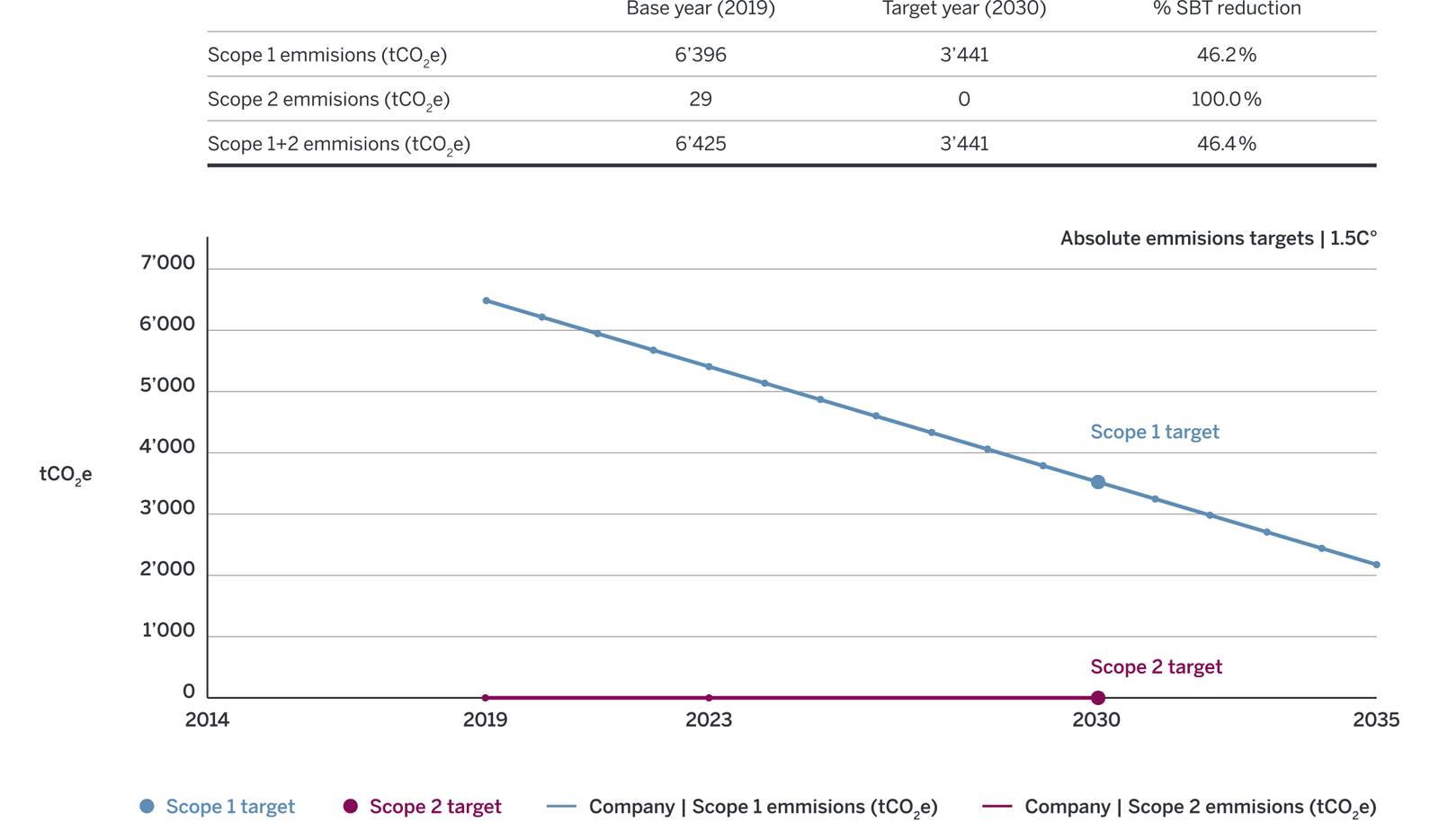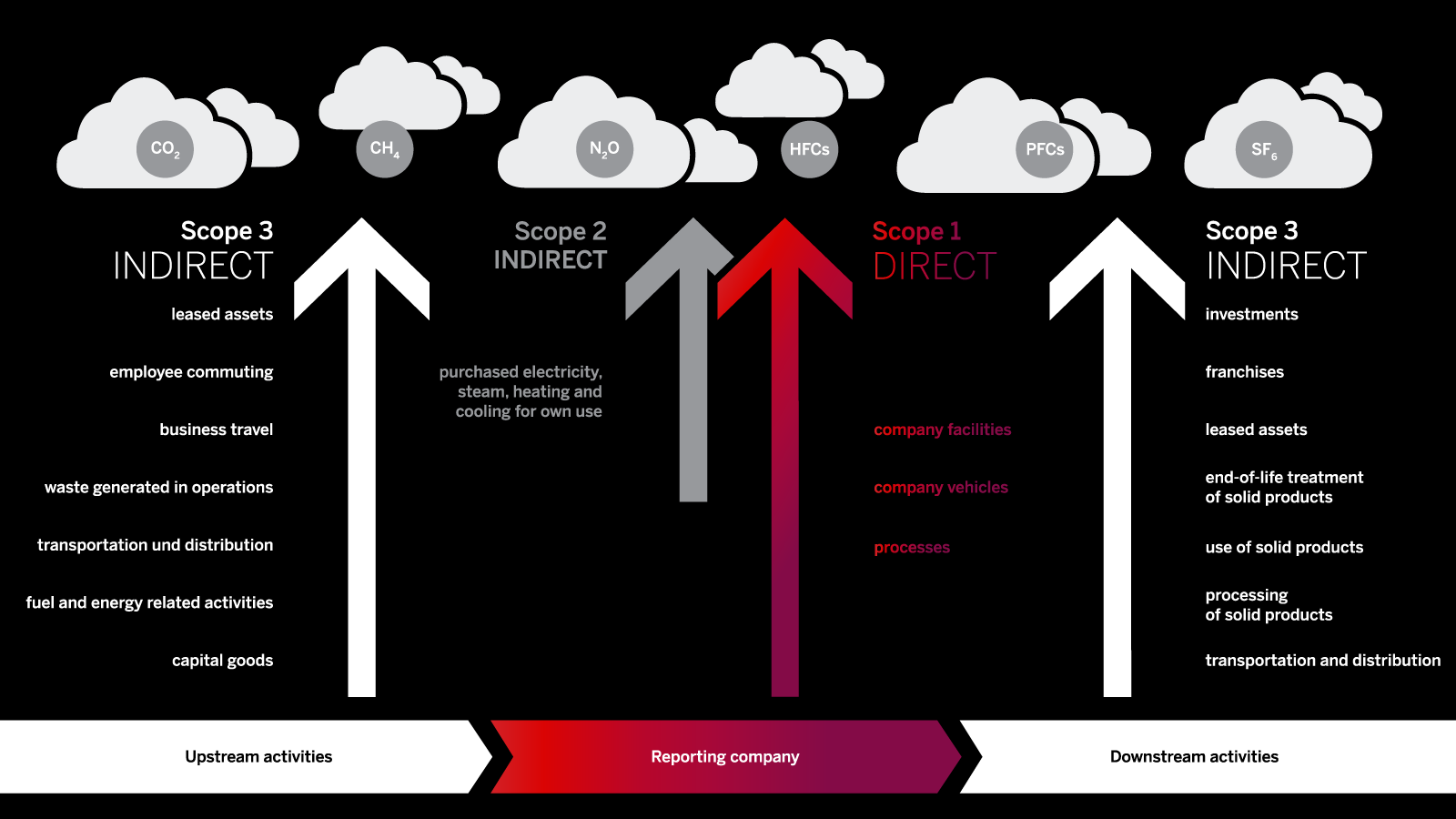1 Introduction
Sustainability? Yes please!
At the end of 2023, Mobility pledged to reduce its emissions in line with the Science Based Targets initiative (SBTi). This standard is recognised, traceable and accords with the aims of the Paris Agreement.
The environmental aspect is deeply embedded in Mobility’s DNA. For a start, our car-sharing service is inherently sustainable, as one Mobility car replaces eleven private cars. But even as a company, we are committed to reducing our emissions. The goal is clear: net zero by 2040.
We hope you enjoy reading our environment report!
2 The positive effects of car sharing
A sustainable product
Fewer cars
The more people using car sharing, the fewer private cars are needed. This ultimately means that fewer resources are required for the production, maintenance and disposal of cars. This is how sharing works. This is how the circular economy works.
Less CO₂
Since car sharing reduces the number of cars on the road, it also lowers CO₂ emissions. Fewer cars means a reduction in the burning of fossil fuels, which, in turn, causes fewer greenhouse gas emissions.
More efficiency
Car sharing promotes the more efficient use of vehicles. Cars that are shared through car sharing are in operation for the majority of the time and very rarely go unused.
0
1:0
More awareness
Car sharing has the ability to raise awareness of environmentally friendly modes of transport. Many people that use car sharing combine different modes of transport such as bikes or public transport. This multi-modal mobility contributes to a type of urban development that is more compatible with everyday life.
Fewer parking spaces
Fewer private cars means fewer parking spaces. This creates room for green spaces or other valuable uses.
0
0
3 Mobility’s road to net zero
Yes to the Paris climate targets
Mobility is aiming to reduce its own emissions across the entire cooperative to net zero by 2040. The biggest lever here is the electrification of its cars. After all, 96 per cent of the company’s current emissions originate from its fleet.
Our goal is not just to play a leading role in the mobility sector, but across the whole of the economy. For this reason, at the end of 2023 Mobility decided to commit to the Science Based Targets initiative (SBTi). As part of the first step, we will reduce our own emissions significantly by 2030. Companies that pledge their support to this initiative aim to reduce their greenhouse gas emissions in line with the Paris Agreement. Signed by 195 countries, the crucial objective of this treaty is to limit global warming to 1.5°C.
0
0
Credible and measurable CO₂ reduction
“Science based targets” are a globally standardised and recognised method by which companies can set realistic, measurable and, most importantly, science based climate protection targets. The fact is that if we want to limit global warming to 1.5°C, only a certain amount of CO₂ can be released worldwide.
Mobility’s current greenhouse gas balance
Last year, as a company Mobility produced 11’824 tonnes of CO₂e*. Around four per cent of this emanates from operational activities, whilst the remaining 96 per cent can be traced back to the vehicle fleet that the company rents out. In order to achieve our net zero target, we must assess all emissions across the cooperative, and not solely focus on our vehicles’ engines. For example, we must evaluate the commuter traffic to which our employees contribute.
* CO₂ equivalent (CO₂e) is a unit of measurement used to standardise the climate impact of various greenhouse gasses. Alongside the most significant greenhouse gas released by humans, carbon dioxide (CO₂), there are also other greenhouse gasses like methane and nitrous oxide.
2’984 fewer tonnes of emissions by 2030
By signing up to SBTi, Mobility is committed to reducing its emissions by 46 per cent compared to 2019 by 2030 as part of the first step. This corresponds to a permanent CO₂ reduction of 2’984 tonnes. As an SME, scope 1 and 2 emissions are relevant for us (see more below). In the base year the figure was 6’425 tonnes of CO₂e. With a reduction of 2,984 tonnes of CO₂e by 2030, Mobility will edge closer to its long-term goal of net zero, which it is aiming to reach by 2040.

4 SBTi explained
How it works
The basis for determining the SBTi objectives is recording greenhouse gas emissions. Mobility records its greenhouse gas emissions in accordance with the Greenhouse Gas Protocol, which is the most widely used standard for preparing greenhouse gas balances. The Protocol defines three “scopes”.
Scope 1
Direct emissions that result from operational processes and facilities. For Mobility, these include emissions from the vehicle fleet it rents out and its ServiceMobiler vehicles.
Scope 2
A company’s indirect emissions, which relate to the purchase of electricity, steam, heat and cold for its own use. Mobility procures energy from renewable sources only.
Scope 3
These emissions encompass a company’s indirect upstream and downstream emissions. Included are emissions arising from employees’ commutes or from vehicle production, for example.

The net zero standard for businesses
The SBTi has launched a net zero standard for businesses. This provides a clear and science-backed definition of net zero and is the world’s first private sector framework for determining long-term, ambitious and science-based net zero goals.
The requirements are as follows:
- Emissions must be reduced by at least 90 per cent compared to the base year and by 2050 at the latest.
- Residual emissions must be offset through negative emissions. Here, only methods that permanently remove CO₂ from the atmosphere are recognised.
- The target must relate to the entire value creation chain (scopes 1 to 3).
- Companies are recommended to also make investments outside of the value creation chain to curb climate change, for example through climate protection projects.
Only after reaching these goals can a company call itself net zero.
5 Electrification as the key
There is no way past electrification
It goes without saying that car sharing is sustainable. And with each new station, Mobility is helping Switzerland become more environmentally friendly. Yet, the cooperative still causes emissions and has set itself the goal of reducing these in line with the SBTi standards. The most significant and efficient measure is the electrification of its fleet, as the shared vehicles are responsible for 96 per cent of Mobility’s emissions. Accordingly, the aim is to run all cars on purely electric power by 2030.
In 2023, the cooperative electrified 251 Mobility parking spaces, thus achieving the goal it set for itself. Meanwhile, around 17 per cent of the 3’000 red cars are powered by electricity. In comparison, the number of electric vehicles on Swiss roads in general was only 3.3 per cent in 2023.
Largest e-stations in Bern and Geneva
Over the last few years, Mobility has gained much valuable experience when constructing charging infrastructure and acquiring electric vehicles. Moreover, 2023 saw the strengthening of the team responsible for electrifying the fleet. The company is now entering the next phase, which involves converting strategically important stations to electric ones. The first major projects were implemented as early as last year – such as the station in Geneva and the current largest electric station at Bern railway station (31 electric charging points).
The regulatory and organisational challenges remain significant, whilst difficult market conditions also prevail. Electric cars are still considerably more expensive than ones with combustion engines. And, to much surprise, from 2024 the Federal Council is scrapping the tax exemption for electric vehicles that previously applied. According to the industry association Swiss eMobility, Switzerland is not a particularly electric-savvy country compared to the rest of Europe.
0
0
Annual electric kilometres have increased tenfold
And yet, for Mobility, there is no way past electrifying its fleet. 2024 will once again see us able to bring many more electric parking spaces on stream, which is particularly good news given the positive reaction of customers to this sustainable mode of mobility. Since the first electric cars were brought on stream, Mobility users have travelled 13.5 million kilometres – about 35 times the distance to the moon – on pure electric power. What this shows is that the more e-car sharing options are available to people, the more they use it. Take the following example: the number of annual electric kilometres has increased tenfold in the last five years. In 2023, the figure was more than five million.
0
0%
The Mobility fleet’s CO₂ emissions are reducing further
Thanks to the ongoing electrification of the fleet and the purchase of low-emission vehicles, the average CO₂ emissions produced by Mobility passenger cars has reduced to 86.3 g/km (NEDC value, excluding vans). That is a further improvement of 4.4 per cent on the previous year. In comparison, the average amount of CO₂ emitted by new Swiss cars is a hefty 120.9 g/km (published by the Swiss Federal Office of Energy, always with a one-year lag).
